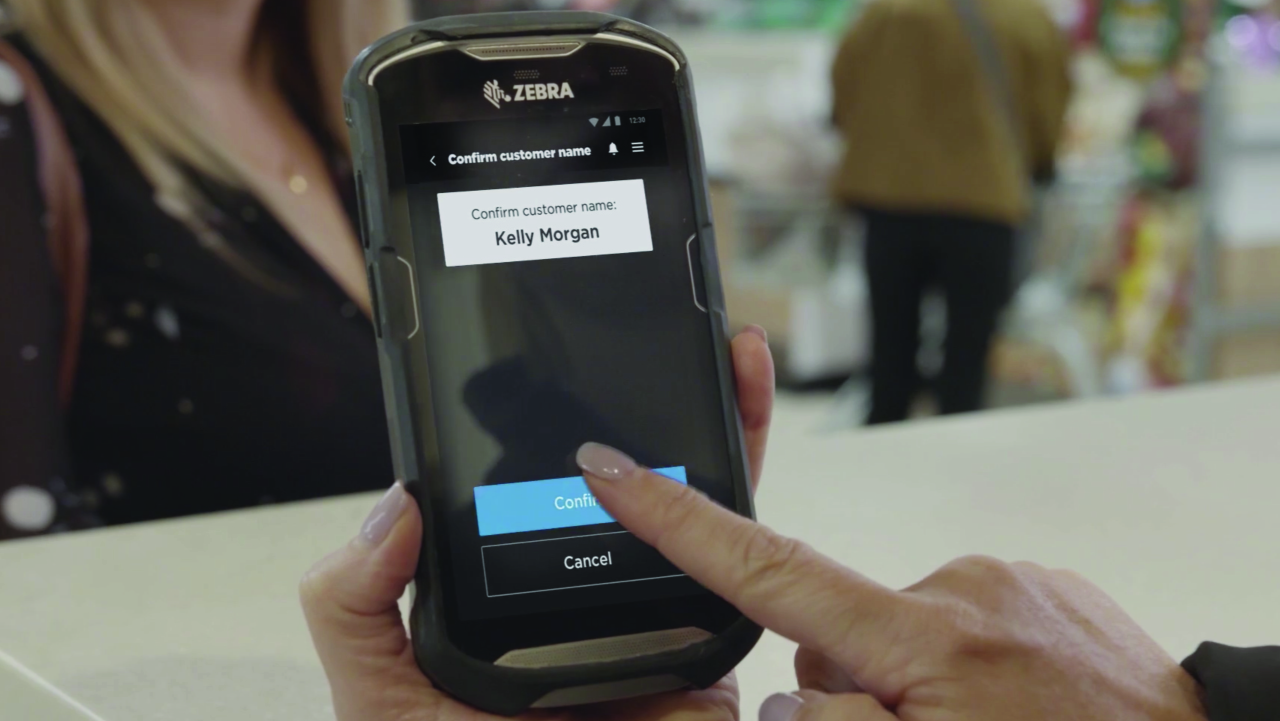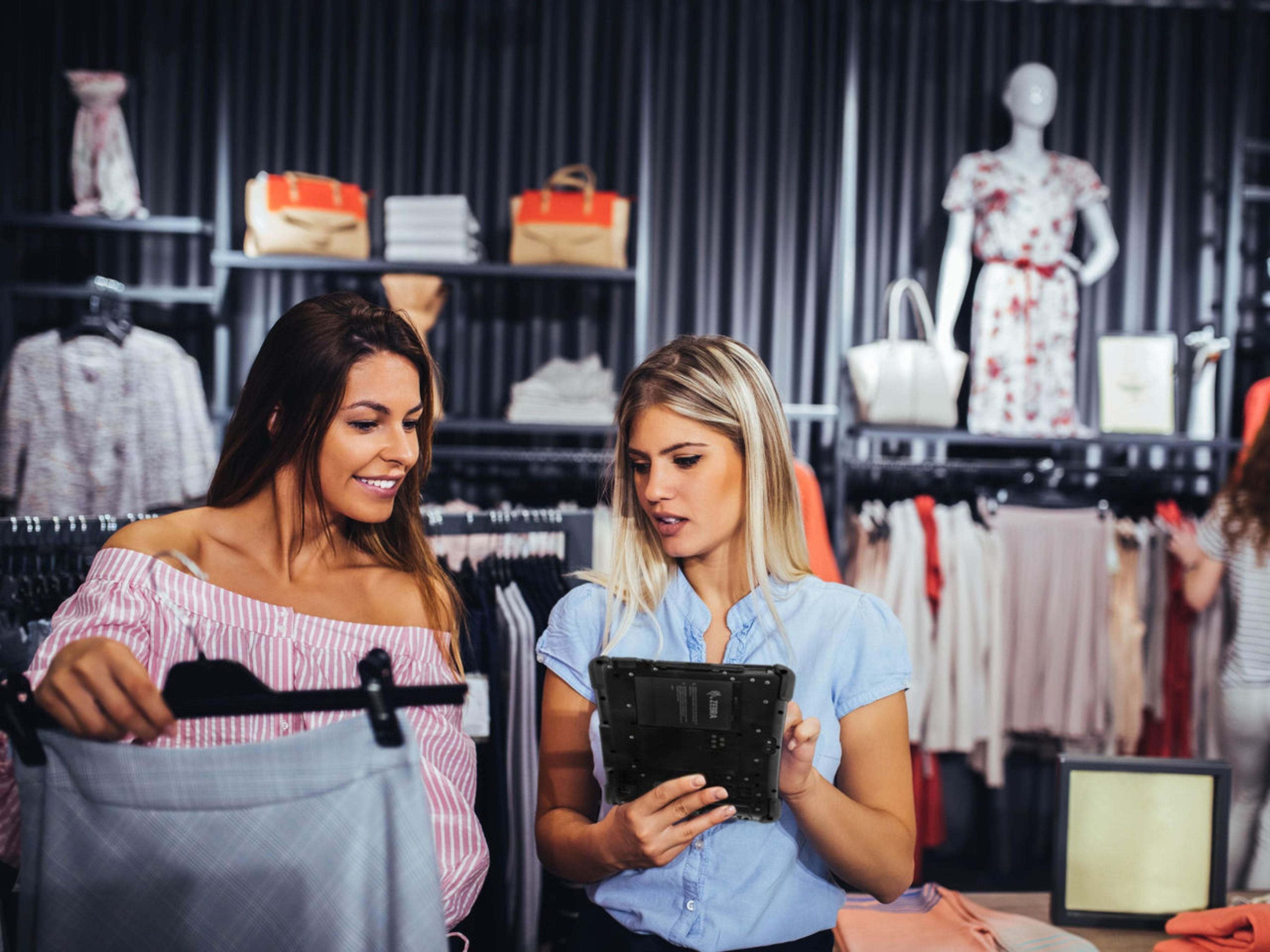
Stories from the Edge: Consumers and Retailers Want More Control Over Online Order Fulfillment. Click-and-Collect is Delivering This.
It’s true: most people still prefer to shop in store as per Zebra’s 2020 Shopper Study. But as the gap between in-store and online purchases starts to close, retailers must find ways to address their current in-store and online fulfillment capabilities. They must also figure out how to deliver an equally fulfilling returns experience to shoppers, which only 59 percent of shoppers find satisfactory today.
That's where companies like Doddle come in:
Doddle’s Mission: Deliver Positive Pickup and Returns Experiences on Behalf of Retailers So That Shoppers Will Keep Returning. Its Strategy: Bring the ‘Last Mile’ Closer without Making Customers Travel Too Far from Home.
The sheer convenience of ‘click-to-buy’ can’t be beaten from a customer perspective. Many people would be happy to avoid in-store crowds, especially during the holiday season. Others don’t want to have to sit in traffic just to grab one or two things or wait in lengthy customer service queues to collect their online orders. Home delivery of everything from gifts to groceries can save people time and their sanity.
Yet, the traditional ‘buy online, ship to home’ model is losing favor.
From retailers’ perspective, it’s not necessarily convenient or cost-effective to ship to customers’ homes anymore. Contracted delivery services aren’t cheap, and it’s hard to hold third parties accountable to delivery deadlines, especially given the uncontrollable factors that come into play: traffic, labor availability, the volume of items being shipped and sorted through distributed channels. Yet, the shrinking labor pool makes it hard for many retailers to fully manage in-house deliveries direct to customers’ doors. Besides, the cost of delivery services extends beyond an employee’s salary; there are vehicle, fuel, insurance and other similar expenses that may be incurred. A certain level of outsourcing must occur.
From the customer’s perspective, the predictability of doorstep drops has made it far too convenient for ‘porch pirates’ to steal packages as soon as they’re delivered. In fact, the rising number of parcel thefts each year poses a dilemma for both customers and retailers. While many customers lose money when packages go missing, retailers tend to absorb the cost of replacing stolen items. There is also an extreme resource burden placed on both parties as they work to resolve the issue via new fulfillment requests, law enforcement reporting and more.
Consequently, the preference for click-and-collect fulfillment has risen among both retailers and shoppers over the past few years and the definition of ‘last mile delivery’ has shifted as customers use retail stores or third-party parcel lockers as their final ‘drop off’ or ‘pick up’ locations.
For the most part, click-and-collect options have proven advantageous to all. But, adapting a multi-faceted fulfillment model – one that balances customer convenience and speed with lower operational costs and practicality – has its own challenges.
To In-Source or Outsource, that is the Question (for Retailers). Doddle’s Answer: Do Both.
With ‘click and collect’ proving to be such a boon, many retailers are turning their stores into fulfillment centers – pulling inventory from shelves to fulfill online and mobile orders, sometimes in two hours or less. They are also turning their stores into return centers. By centralising order pick-ups and returns in store, retailers simultaneously increase control over inventory distribution, reduce shipping costs and protect parcels from landing in the wrong hands – all to their financial benefit. Plus, customers who ‘buy online, pick up in store’ (BOPIS), ‘buy online, ship to store’ or ‘buy online, return in store’ are more likely to browse and even make additional purchases. Retailers are even starting to see some curbside pickup customers ultimately park their vehicles and walk into the store to browse or buy more items.
Of course, in-store pickups and returns can be highly convenient for shoppers, too.
Store associates equipped with handheld mobile computers and tablets can expedite pickup by simply scanning a barcode on a customer’s online receipt. The location of the customer’s order is automatically shown on the device screen, making item retrieval easy and fast. Self-service kiosks can deliver a similar experience, prompting a stockroom associate to immediately retrieve and bring the item to the customer. In some cases, kiosk-facilitated fulfillment can be fully automated so no human interaction is required. Customers can get in and out quickly.
That being said, there are several reasons why customers may not want to collect their orders directly from the store or even at the curbside. Waiting in lengthy, slow customer service or kiosk queues may be inconvenient for those with kids and pets in tow as well as for those who are not feeling well. Then again, the store could just be too much out of the way or an e-commerce only operation.
That’s where parcel lockers and third-party shipping centers come into play – and how Doddle got its start in 2014.
In the beginning, Doddle opened up its own branded storefronts to serve as physical order collection and return points for e-commerce shoppers. But these off-site collection points didn’t totally alleviate the strain placed on retailers to manage online order fulfillment and returns in store. In fact, 75 percent of retail executives who participated in Zebra’s 2020 Shopper Study agree that managing returns of online orders is a significant challenge. Forty-six (46) percent have started or are planning to upgrade their returns management technologies in the next five years.
Doddle started to recognize that this is a challenge that is best solved collaboratively – with a combination of in-sourced processes and outsourced services that are all facilitated via technology in some capacity. That’s why Doddle eventually approached retailers to see if they could discreetly but transparently ‘set up shop’ in retailers’ stores. It’s also why Doddle contacted Zebra.
If executed well, setting up Doddle’s collection counters in retailers’ existing stores would provide secure pickup and return locations for customers’ online orders. They would also drive footfall into retailers’ stores. At the same time, placing Doddle’s self-service return kiosks in retailers’ stores could help to alleviate some of the pain points associated with the reverse logistics process for customers and retailers alike.
Today, Doddle is offered exclusively as a service within other retailers’ stores across the United Kingdom; they do not offer their collection services in Doddle-branded storefronts. This new business model is proving to benefit both retailers and shoppers.
Digital Purchases + Digitally-Enabled Physical Collection Points = A Fulfilling Shopping Experience That's Embraced by Retailers and Customers Alike
If retailers want to create a sustainable click-and-collect fulfillment model and, in the process, increase in-store footfall from online customers, they have to simultaneously adapt their associate-driven fulfillment process to incorporate more technology tools and adopt some outsourced technology solutions such as Doddle’s self-service kiosks in their stores.
The in-store pickup or drop-off transaction must be as fast as grabbing a package off a doorstep or dropping it in the mailbox – and far more secure.
That is why Doddle prioritised the digitalisation of its services from day one, partnering with Zebra to develop a scalable digital operation that could improve the efficiency of physical store operations as click-and-collect demands evolved and its network of collection points expanded.
They started by deploying enterprise-grade Zebra handheld mobile computers, printers and touch-screen kiosks that could improve the speed and accuracy of pickups and drop-offs, whether completed with assistance from a customer service representative or via self-service actions. The software running on these devices was developed by Doddle to specifically facilitate order picking and returns processing actions, including label printing – and it was ultra-effective.
However, Doddle quickly realised with Zebra’s input that devices alone don’t deliver the level of operational intelligence required to fulfill orders with the speed and accuracy needed for 100 percent customer satisfaction. Nor can a device – whether a mobile computer or kiosk – fully augment a store associate or fully automate a pickup or drop off. It may be the tool by which data is captured and ultimately acted upon, but another layer of ‘intelligence’ technology is needed to fully sense changing trends in customer behaviors, analyse operational performance related to fulfillment and identify opportunities to use online orders to increase in-store footfall and, ideally, sales. At the same time, a certain level of workflow intelligence is needed to accurately manage inventory levels and avoid out-of-stocks or overages as items leave or re-enter the supply chain via multiple fulfillment touchpoints.
So, Zebra introduced Doddle to its Zebra Data Services™ platform, suggesting ways in which this cloud-based application programming interface (API) could be used to help ‘iterate Doddle’s click and collect solutions at the pace the market requires.’
Zebra Data Services has enabled Doddle to expand its support for retailers in store by adding new kiosk-based ‘ship from store,’ ‘pickup in store’ and ‘return in store’ services. For example, Doddle uses the blockchain ledger provided via the Zebra Data Services platform to distribute data across retailers’ supply chains when a return occurs at the kiosk. As a result, retailers and their suppliers can make more intelligent decisions about what to do with that item. Specifically, they can use the data captured at the return collection point – the self-service kiosk – to reduce associated handling costs with getting the item back on sale more quickly.
This is just one of the benefits of introducing more intelligence-centric technology systems throughout the retail supply chain and particularly at fulfillment centers.
As Doddle has proven, retailers value insights about what is happening in their stores and supply chains as much as customers value convenient and secure parcel deliveries. In fact, the only way to know if you’re meeting customers’ fulfillment expectations – or how to adjust processes if you’re not – is to invest in the ‘intelligence’ software solutions that enable mobile devices and kiosks to become smart fulfillment tools.
Implementing an Intelligent Returns Platform Delivered a Significant Return on Investment (ROI) for Doddle – and It Can Do the Same for Your Retail Business
Although Doddle started off as a small click-and-collect business in the UK aimed at e-commerce companies, its commitment to smart innovation resulted in the creation of a powerful, digitally-enabled order pickup and return service that is augmenting the human-delivered service capabilities of multiple retailers across multiple continents – including more traditional brick-and-mortar brands.
Even more compelling, though, is the fact that Doddle never abandoned its traditional business model despite the evolution of market demands. Its focus remains on facilitating a profitable click-and-collect logistics process. Doddle has simply collaborated with Zebra to adapt and enhance its processes and technology solutions to accommodate market shifts and better serve its customers.
As a result, Doddle gained the performance edge it needed to grow quickly, reliably and cost-effectively in the ‘now economy’ and has helped retailers do the same.
###
Editor’s Note: To learn more about the solutions Doddle uses to deliver its highly intelligent and convenient click-and-collect services to retailers and shoppers, visit Zebra’s website or reach out to our retail team.

Mark Thomson
What’s happening in retail? How has the shift in shopping behavior impacted retailers around the world and will robots take over? Mark Thomson’s exploration of the global retail landscape helps retailers gain a focus on what’s real and what works when building a retail strategy in a digital world.
As Director of Retail Industry Solutions at Zebra Technologies, Mr. Thomson works closely with retailers and hospitality businesses to provide input on how to face the challenge of a new digital retail landscape, where customers are often more connected and informed than shop floor staff. Mr. Thomson helps retailers focus on developing a vision for their retail business that aims to improve customer experience and drive business efficiencies.
With over 27 years of customer-focused experience, Mr. Thomson has developed in-depth knowledge of the EMEA and global retail marketplace and regularly speaks at industry events throughout the EMEA region including World Retail Congress, Retail Middle East, RBTE and Euroshop. He has worked closely with retailers on the pain points of modern retail and explains how technology solutions can be an integral part of their business strategy to help them solve their real business challenges from supply chain to store.
Prior to joining Zebra, Mr. Thomson held senior roles in Financial Services and Hospitality businesses.




